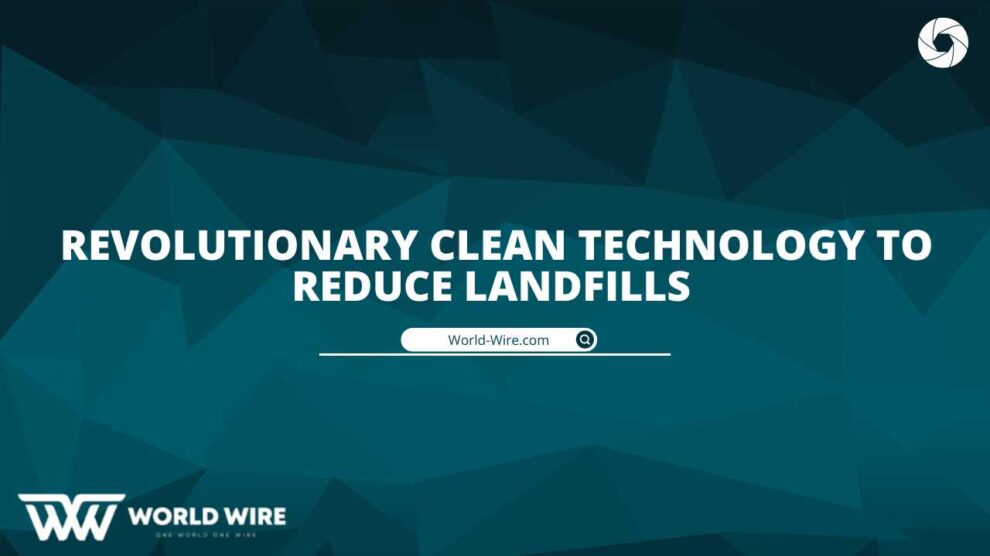A high-tech trash conversion business called Carbon Diversion, Inc. has successfully run a new system that can quickly and effectively transform anything from tyre debris to agricultural and biological waste to tree clippings into valuable carbon products, which could cut landfills by 30%. It is also possible to use the ground-breaking technique, known as Flash CarbonizationTM, to co-generate power.
The Flash CarbonizationTM technology will be on exhibit at the Campbell Industrial Park, Kapolei, Oahu, Hawaii, for visitors from state government agencies, the global business community, and private investors during the next weeks and months.
The Flash CarbonizationTM method was invented by Carbon Diversion Inc., a business committed to sustainability and renewable energy. It was patented in 2003.
The Flash CarbonizationTM procedure was officially “first run” by Carbon Diversion on Wednesday, June 7 in Kapolei, Oahu’s Campbell Industrial Park. Lump charcoal was created out of kiawi wood that would have otherwise gone to a landfill with a capacity problem. The charcoal is being sold as a component of the community’s supply of cooking charcoal.
Carbon Diversion CEO Michael Lurvey remarked, “We think this technology will change the world and are devoted to serving the worldwide society. “Our purpose is to be responsible for where things go after they are used and to be a leader in triple-bottom line business, demonstrating that we can improve the world for our children. Additionally, we may increase the value of natural resources that were previously considered to be trash.”
The Flash CarbonizationTM method greatly improves carbonization quality and speed by using carefully controlled burns under high pressure. As a result, wood (biomass) has a 200% higher energy value than existing commercial methods and may be turned into charcoal in as little as 30 minutes as opposed to 3 to 10 days.
Wood is stacked into a vertical reactor chamber and loaded with a crane to start the Flash CarbonizationTM process. A flash fire is started at the chamber’s base when the chamber is shut. An ongoing supply of oxygen is continuously injected into the enclosed reactor, speeding up the process that turns wood into charcoal. Wood may be replaced with a variety of organic materials, including tyres and biomedical waste.
Through the conversion of exhaust into steam, the Flash CarbonizationTM method removes greenhouse emissions. When a turbine is added, the steam may generate power.
Only a half-acre is needed for the Flash CarbonizationTM reactor, which is nine feet tall, three feet in diameter, and employed in the process. Contrary to bigger refineries, these reactors are neighborhood-friendly, readily transportable, and have reduced capital needs to serve local and rural populations. The reactor systems are straightforward to operate, and two operators must be present at all times.
Hawaii’s Carbon Diversion is strategically located to serve partners in North America as well as Pacific Rim nations including Australia, Asia, and the smaller Pacific Basin nations.
We’ve spoken about a mobile model for developing communities that is put on a truck and transported around from one community to the next, said Lurvey. “The reactor and complete system have been built to be portable and scalable.”
In order to expand, Carbon Diversion aims to open operations in Hawaii and is looking for reliable partners. The company’s aim is to lease the technology to partners in order to lower the initial capital expenditure as part of its commitment to bringing the technology to the widest possible market.
The technique is an excellent option for underdeveloped countries as a renewable energy source and as a necessary recycling system for industrialised countries (green trash makes up 1/3 of the waste stream in the United States and releases greenhouse gases when it decomposes).
The technology has a few significant high end applications as well. One of the highest classes of activated carbon in the world, for instance, is made from coconut shells and is utilised by the EPA to remove environmental dangers as well as in liquid and gaseous filtration applications.
On the verge of dominating waste conversion technology is Carbon Diversion, Inc. Using the Flash CarbonizationTM method, the firm is dedicated to understanding, advancing, and promoting sustainability and renewable energy.







Add Comment